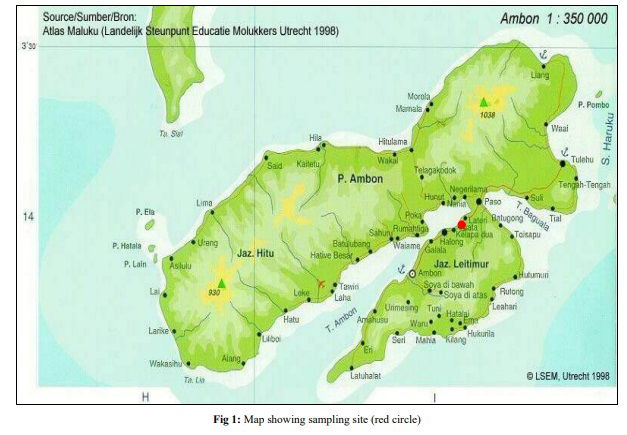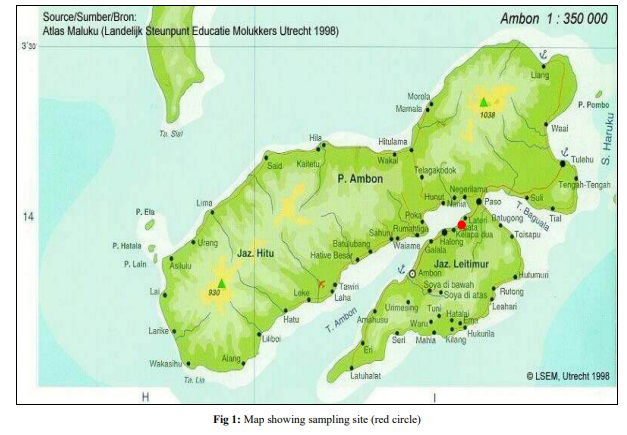Community structure of fish in inner Ambon bay, Maluku, Indonesia

Abstract
Research to study community structure of fish was carried out during April/May 2014 represented first transition period and during January/February 2015 represented west monsoon at Lateri waters, Inner Ambon bay. Fish samples were collected by using beach seine operating during the night. A total of 31 families that consist of 50 species of fishes were collected during the study in which 27 were pelagic fishes and 23 were demersal species. The most abundant species was represented by Stolephorus indicus (>50%) followed by Leiognathus leuciscus and Encrasicholina hetroloba (pooled > 25%). The highest occurrences of frequency were represented by Caranx sexfasciatus, Leiognathus equulus and S. indicus (presence=100%), while the lowest were represented by 14 species (12.5%). Shannon diversity indexes (H’) for first transition, west monsoon and pooled were 1.57, 1.84 and 1.83, respectively with the Simpson dominance indexes were 0.37, 0.24 and 0.30, respectively. Shannon evenness indexes for first transition, west monsoon and pooled were 0.43, 0.52 and 0.47, respectively. Based on those three indexes it could be concluded that fish community in Inner Ambon bay have moderate diversity with low dominance but in unsteady state. This unsteady state of fish community could be due to high fishing intensity or might be due to environmental degradation of Inner Ambon bay. Keywords: Fish community structure, abundance, diversity, Ambon bay Mangrove
1. Introduction
Ambon bay located in Ambon Island, Maluku province is famous not only for its beauty but also for its potential of fishery resources such as fish, crustacean, mollusk and echinoderms [16, 18-20, 26, 27]. This fishery potential occurs because it is supported by three ecosystems i.e. mangrove, seagrass and coral reef which are used as habitat for a number of marine organism including important economical species [7, 12, 21, 26, 27]. Those three ecosystems are used by various marine biotas as spawning area, feeding ground and sanctuary area. Ambon bay is divided into two parts namely Inner Ambon bay and Outer Ambon bay. Inner Ambon bay or locally known as Teluk Ambon Dalam (TAD) for long time is known as fishing ground for variety of fishes. Some researchers [9, 13, 14, 18, 19, 22-25, 29] have used TAD to study fish resources. Development due to population increase in Ambon Island will affect environment of Ambon bay, especially TAD which is a semi-closed waters, with an almost round shape and shallow [18]. In fact, degradation has occurred in some part of ecosystem which supports fish resources in TAD as reported by Tuhumury (2008) [28] and Bakarbessy (2014) [4]. Ecosystems degradation could cause some adverse change in community structure of fishes that is associated with them resulting in fish decrease, migrate to other place or extinct [7, 26]. Temporal changes in the associated fish community in TAD have not been well documented. Therefore, this research was conducted to get some recent information on fish resource in TAD by focusing in studying community structure of fish in first transition period and west monsoon.

